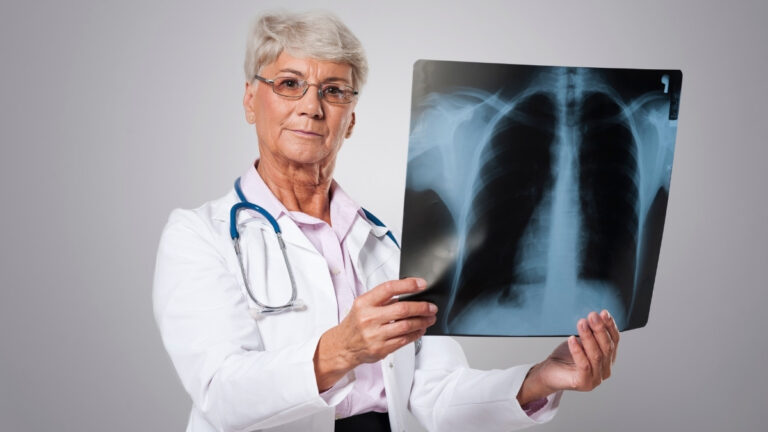‘I Thought It Was Just a Cough’ – The Shocking Link Between Weekend Drinking, Cigarettes, and Lung Collapse

That nagging cough after your weekend fun? It might signal something far more serious than a simple irritation. Thousands of young adults dismiss these warning signs each year, unaware that the combination of alcohol and cigarettes creates the exact conditions for spontaneous pneumothorax—a sudden, potentially fatal lung collapse that strikes without warning. Many victims report the same haunting words: “I thought it was just a cough.”
Want to protect yourself and loved ones from this hidden danger? The solution starts with understanding how your weekend habits might be setting you up for disaster. The good news? Simple awareness and specific lifestyle adjustments can dramatically reduce your risk. Let’s explore what medical experts wish everyone knew about this frightening connection before another night out turns into an emergency room visit.
#1. THE SILENT WARNING SIGNS

That persistent cough following weekend revelry isn’t merely a consequence of smoke-filled environments but potentially signifies spontaneous pneumothorax—a life-threatening condition where air leaks into the pleural space, causing partial or complete lung collapse without any physical trauma. What most dismiss as a temporary irritation could be the body’s urgent distress signal, with symptoms including shallow breathing, sudden chest pain radiating to the shoulder, and a dry, non-productive cough that doesn’t respond to typical remedies.
Warning Signs
Early symptoms often mimic a simple cough or mild discomfort that many attribute to smoking or hangover effects. However, warning signs of a potential lung collapse include:
- Sudden sharp chest pain that may radiate to the shoulder
- Shortness of breath, especially during physical activity
- A dry, persistent cough that doesn’t improve
- Pain that worsens when taking deep breaths or coughing
#2. THE YOUNG ADULT RISK FACTOR

Medical statistics reveal a counterintuitive demographic for spontaneous pneumothorax: predominantly healthy young adults aged 20-40, especially tall, slender males with smoking habits, not the chronically ill or elderly populations typically associated with serious respiratory conditions. This alarming predisposition stems from anatomical factors including greater negative pressure at lung apices in taller individuals and the catastrophic tissue-weakening effects of cigarette toxins on developing lung structures, creating vulnerability precisely when young adults feel most invincible.
#3. THE WEEKEND WARRIOR EFFECT

Epidemiological studies document a statistically significant spike in emergency room admissions for spontaneous pneumothorax cases occurring Sunday through Monday morning, establishing a direct correlation with increased weekend alcohol consumption and intensified smoking during social activities. This “weekend warrior phenomenon” reflects how recreational habits create cyclical patterns of respiratory crisis, with research from multiple countries confirming this timing isn’t coincidental but represents a genuine public health pattern demanding urgent awareness.
#4. THE DANGEROUS COMBINATION

Alcohol exerts a double assault on pulmonary defenses by suppressing protective cough reflexes and impairing ciliary function—tiny hair-like structures that clear airway debris—while simultaneously lowering inhibitions that lead to chain-smoking, creating perfect conditions for developing bullae (weakened, balloon-like air sacs). These fragile structures, formed through repeated toxic exposure, eventually rupture under minimal stress like coughing or sudden position changes, releasing air into spaces where it becomes trapped between lung tissue and chest wall, collapsing vital respiratory capacity.
#5. MISDIAGNOSIS IS COMMON

Healthcare providers frequently attribute the sharp chest pain and shortness of breath following weekend partying to bronchitis, musculoskeletal strain, panic attacks, or even heartburn, resulting in dangerous treatment delays for what requires immediate emergency intervention. The diagnostic confusion stems from symptom overlap with common conditions and patients’ reluctance to fully disclose recreational habits, making it crucial to recognize the triad of sudden-onset chest pain, dyspnea that worsens with exertion, and decreased breath sounds on one side—particularly following a weekend of heightened alcohol consumption and smoking.
Key Risk Factors
Young adults (20-40 years old) are surprisingly the most at-risk demographic, especially tall, thin men who smoke. This contradicts the common belief that serious lung problems primarily affect older people. The anatomical structure of taller individuals creates greater negative pressure at the top portions of their lungs, making them more susceptible.
#6. THE RECOVERY REALITY

Treatment for spontaneous pneumothorax typically involves hospitalization averaging 4-7 days, with approximately 75% of patients requiring chest tube insertion—a painful procedure where a tube is inserted between the ribs to evacuate air and allow lung re-expansion. For the 30-50% of patients who experience recurrence, surgical interventions including pleurodesis (chemical scarring of the pleural membranes) or bullectomy (removal of damaged lung tissue) become necessary, with full recovery extending 3-6 months and potential long-term pulmonary function reductions of 10-15% even after successful treatment.
#7. LONG-TERM LIFESTYLE IMPACT

Research published in the Journal of Thoracic Disease reveals that 64% of spontaneous pneumothorax survivors develop clinical anxiety related to recurrence fears, with many reporting persistent chest sensations and hypervigilance about breathing changes years after recovery. This psychological burden compounds the necessary lifestyle modifications—92% of physicians mandate immediate smoking cessation, 70% recommend permanent alcohol moderation, and approximately 40% advise temporary or permanent restrictions on activities involving pressure changes (including air travel, scuba diving, and high-altitude hiking), creating significant social and recreational limitations for predominantly young, active patients.
#8. THE OVERLOOKED WARNING SYSTEM

Pulmonary specialists have identified a constellation of prodromal symptoms that often precede full pneumothorax by 24-72 hours: localized upper chest discomfort that migrates over hours, unexplained fatigue disproportionate to activity level, and a distinctive dry cough that worsens when lying flat. These early warning signs are detectable in approximately 60% of cases retrospectively, yet studies show that fewer than 15% of at-risk individuals (young smokers who drink) can correctly identify these symptoms as potentially serious, with most attributing them to routine smoking effects or alcohol recovery—a dangerous knowledge gap that respiratory medicine education campaigns are specifically targeting.
#9. BREAKING THE CYCLE

Preventative medicine research demonstrates that three specific interventions can reduce spontaneous pneumothorax risk by up to 80% in high-risk individuals: complete smoking cessation (which begins restoring ciliary function within just 72 hours), limiting alcohol consumption to moderate levels (reducing inflammatory cascade activation), and maintaining proper hydration during and after drinking sessions (preventing excessive mucus thickening in airways). Beyond these behavioral modifications, regular low-impact cardiovascular exercise has been shown to improve lung tissue resilience and increase awareness of subtle respiratory changes—a combination approach that thoracic specialists increasingly prescribe for patients following their first pneumothorax episode.
Prevention
The most effective prevention strategy is quitting smoking completely. Moderating alcohol consumption is also important, as is staying well-hydrated during social activities. Understanding your personal risk factors, especially if you fit the high-risk demographic profile, can motivate necessary lifestyle changes.Retry
(Final Thought)
What starts as a casual weekend ritual could end in a hospital emergency room—your body’s breaking point isn’t something you schedule. While that post-party cough seems insignificant today, it might be your last warning before a catastrophic lung collapse tomorrow. Most victims never connect their weekend habits to their sudden medical emergency until it’s too late, creating a silent epidemic among young adults who believe serious health consequences happen only to others. The truth stands stark and unavoidable: your weekend choices accumulate in your body long after the hangover fades. Your next breath deserves more consideration than your next drink, because unlike weekend memories, functioning lungs aren’t something you can afford to lose.






